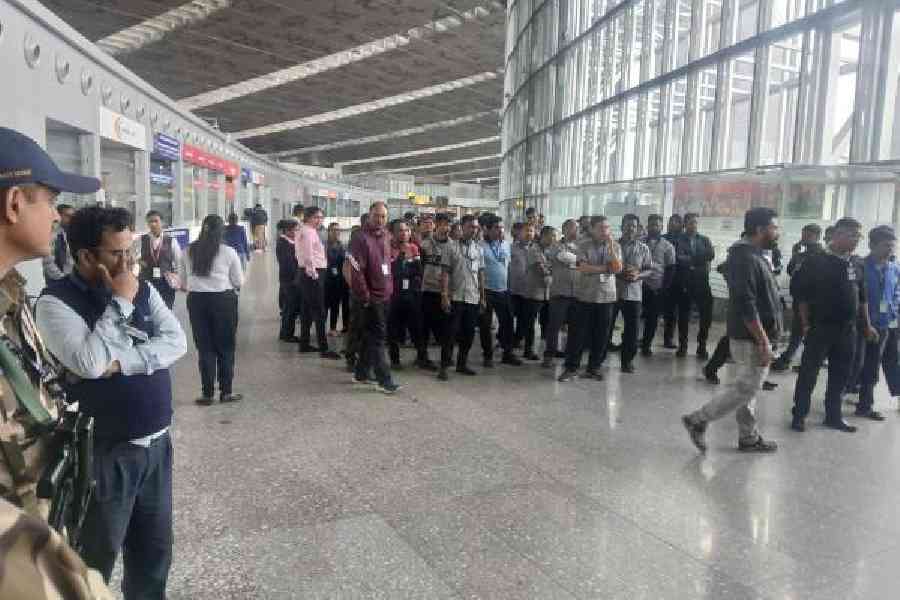 |
Atul Muthuswamy was meant to live. He had undergone a complex brain surgery after a head injury, and his doctors at the Pondicherry Institute of Medical Sciences (Pims) were happy with the outcome. But Muthuswamy caught an infection while he was in the intensive care unit (ICU) and died because medicines were of no help to him.
Prashanti’s story is similar. Doctors in a Bangalore hospital gave the 34-year-old blood cancer patient a 50 per cent chance of recovering if bone marrow from her sibling was transplanted. But a bacterial infection she picked up while in the hospital turned out to be fatal for her. And again, antibiotics were of no use.
These aren’t isolated cases. As a controversy rages over superbugs — which a team of international medical researchers claims to have identified in New Delhi’s water supply — experts are worrying about germs that are resistant to antibiotics. What killed Muthuswamy and Prashanti was a bacterial strain resistant to the carbapenem class of antibiotics which doctors consider their last weapon in their fight against microbes.
A paper by a team of scientists led by Timothy R. Walsh of Cardiff University School of Medicine in the UK, published in the journal Lancet Infectious Diseases earlier this month, says the capital’s water supply is contaminated by bacteria carrying a deadly enzyme — the New Delhi metallo-beta-lactamase, or NDM-1 — which makes bugs resistant to a broad range of antibiotic drugs available in the market.
Clearly, antibiotics, which have been saving lives ever since their discovery 80 years ago, are losing their edge. In the race between germs and drugs, germs are outpacing medicines. While existing antibiotics are losing their efficacy at an alarming pace, the development of new antibiotics is declining.
The world is worried — which is why the World Health Organization has declared antimicrobial resistance as its theme for this year. It says the pipeline for development of new antibiotics has been drying up since the 1980s, which is a cause of concern.
While more than a dozen new classes of antibiotics were developed in the 1930s through the 1960s, there have only been two new classes since then, the carbapenem class being one of them.
 |
In Muthuswamy’s case, doctors isolated a Pseudomonas aeruginosa bacterial strain resistant to carbapenem from him, says Shashikala Kanungo, a microbiologist at Pims.
P. aeruginosa, a common bacterium with much resilience, is present everywhere, including hospitals. The bug is commonly found on critical care medical equipment such as ventilators and catheters, causes cross infections, and easily colonises in vital organs, including the lungs, urinary tract and kidneys.
This and similar incidents prompted Kanungo and her colleagues to launch a study which bore out the fact that more than 10 per cent of P. aeruginosa infections in the hospital was resistant to carbapenem, the only drug that was believed to be effective against it. The Pims microbiologists found that the problem arose from the fact that doctors were prescribing what they thought was the “best” antibiotic to patients who had undergone surgeries or were admitted to the ICU.
“This strategy, which is done with good intentions, however, has backfired as the bug develops resistance to the drug as it comes in contact with diluted concentrations of the drug,” Kanungo says.
Since then, the hospital has chalked out an antibiotic policy which alternates between different kinds of drugs — and a change is already visible. Patients are responding to an older generation of antibiotic drugs, which are not only less expensive but less toxic as well.
To beat the germ, many good hospitals in the country now have their own antibiotic policy. But that is not the final solution to the problem of the galloping germs. “It’s a vicious cycle,” says Lt Gen. (Retd) D. Raghunath of the Sir Dorabji Tata Centre for Research in Tropical Diseases, Bangalore.
According to Raghunath, a medical microbiologist who served as the head of the Army medical service, both patients and doctors are at fault. “We have patients who often demand antibiotics even when they do not really need them and doctors who hand them out without thinking of the consequences,” he says.
The problems, he elaborates, are manifold. Pharmaceutical companies are pushing their drugs. Pharmacies that sell these antibiotics as over-the-counter drugs do so without a prescription. Besides, antibiotic drugs are also fed to livestock, thus helping them enter the food chain through animal products as well as the environment through their excreta, says Raghunath.
In India, the problem is particularly grave because of the easy availability of drugs. According to the government, over 80 per cent of antibiotics are available through pharmacies, while the remaining 20 per cent is strictly used in hospitals. “It is high time we created awareness about the consequences of the irrational use of antibiotics at all levels of society,” says Manish Kakkar, a public health expert with the Public Health Foundation of India, New Delhi.
But what’s worse, the experts say, is that the government is seemingly not worried about the dangers the trend poses. India, Kakkar rues, hasn’t conducted any nationwide study to ascertain “the dimension of the beast”.
A task force was, however, set up last August under the chairmanship of the director general of health services, R.K. Srivastava, to deal with it. It found that 20-50 per cent of all antibiotic use in the country is inappropriate. Independent experts, however, wonder how it reached this figure without a nationwide survey.
What’s clear is that unless steps are taken immediately to deal with the problem, people will lose their battle with germs. Many infectious diseases which had earlier been subdued may re-emerge. Or drugs that tackle ailments will no longer be able to do so.
Take the case of typhoid, which has a very high mortality of 10-15 per cent if not treated, says Raghunath. Children, who are yet to develop adequate immunity, will be at the greatest risk.
To save lives, the government must evolve a comprehensive policy and undertake urgent measures to ensure antibiotic dispensing is regulated.
“If we take some concrete steps today, the results will be seen only a decade or so later,” says Raghunath.
Yet the government seems to be in a denial mode ever since the Lancet Infectious Disease report was released. The report said scientists detected NDM-1 gene in 14 species of bacteria — including those that cause dysentery and cholera — in water samples collected from Delhi, but the government is not greatly worried. “We have no evidence to suggest that NDM-1 is a public health problem,” Vishwa Mohan Katoch, director general, Indian Council of Medical Research (ICMR), said at a press conference.
Walsh, however, contests this. NDM-1 is clearly widespread in New Delhi and probably many other Indian cities. He believes that one in every 10 Indians carries the NDM-1 positive bug. “Until we do some studies, we will never know. Given that E. coli causes 70 per cent of community-borne infections, it’s a colossal problem for Indians reliant on public facilities,” says Walsh.
There are some signs that the government is waking up. The ICMR recently called for proposals from Indian scientists to study antibiotic resistance. The problem is that by the time it formulates a policy, it will too late for many like Muthuswamy and Prashanti.










